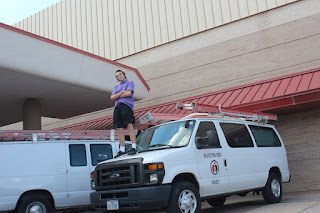APERTURE, SHUTTER SPEED, AND ISO
Aperture
1) Aperture could be compared to the pupils of our eyes.
2) The smaller the aperture, the more light is let in and the less depth there is. The bigger the aperture is, the less light is let in, and the more depth there is.
3) Aperture effects the depth of the field by blurring or not blurring out the background. Smaller aperture blurs more of the background and creates less depth. While larger apertures keep the background clear and create more depth.
Shutter speed
1) a. High shutter speed
b. Medium shutter speed
c. Low or High shutter speed - It depends what type of photo one is trying to take
d. Low or High shutter speed
e. High shutter speed
f. Low shutter speed
a. Low shutter speed
b. Low shutter speed
c. Low or High shutter speed
d. Low shutter speed
e. Low shutter speed
f. Low shutter speed
b. Medium shutter speed
c. Low or High shutter speed - It depends what type of photo one is trying to take
d. Low or High shutter speed
e. High shutter speed
f. Low shutter speed
a. Low shutter speed
b. Low shutter speed
c. Low or High shutter speed
d. Low shutter speed
e. Low shutter speed
f. Low shutter speed
ISO
1) Shooting at a higher ISO can increase the brightness of a photo that you take at night or in a dark setting.
2) The author suggests that if there's enough light, you should always use the lowest ISO of your camera.
3) The author also says that the only situations where you should use high ISO is when your scene doesn't have enough light or when your subject is moving fast and you want to prevent blur.
2) The author suggests that if there's enough light, you should always use the lowest ISO of your camera.
3) The author also says that the only situations where you should use high ISO is when your scene doesn't have enough light or when your subject is moving fast and you want to prevent blur.

Comments
Post a Comment